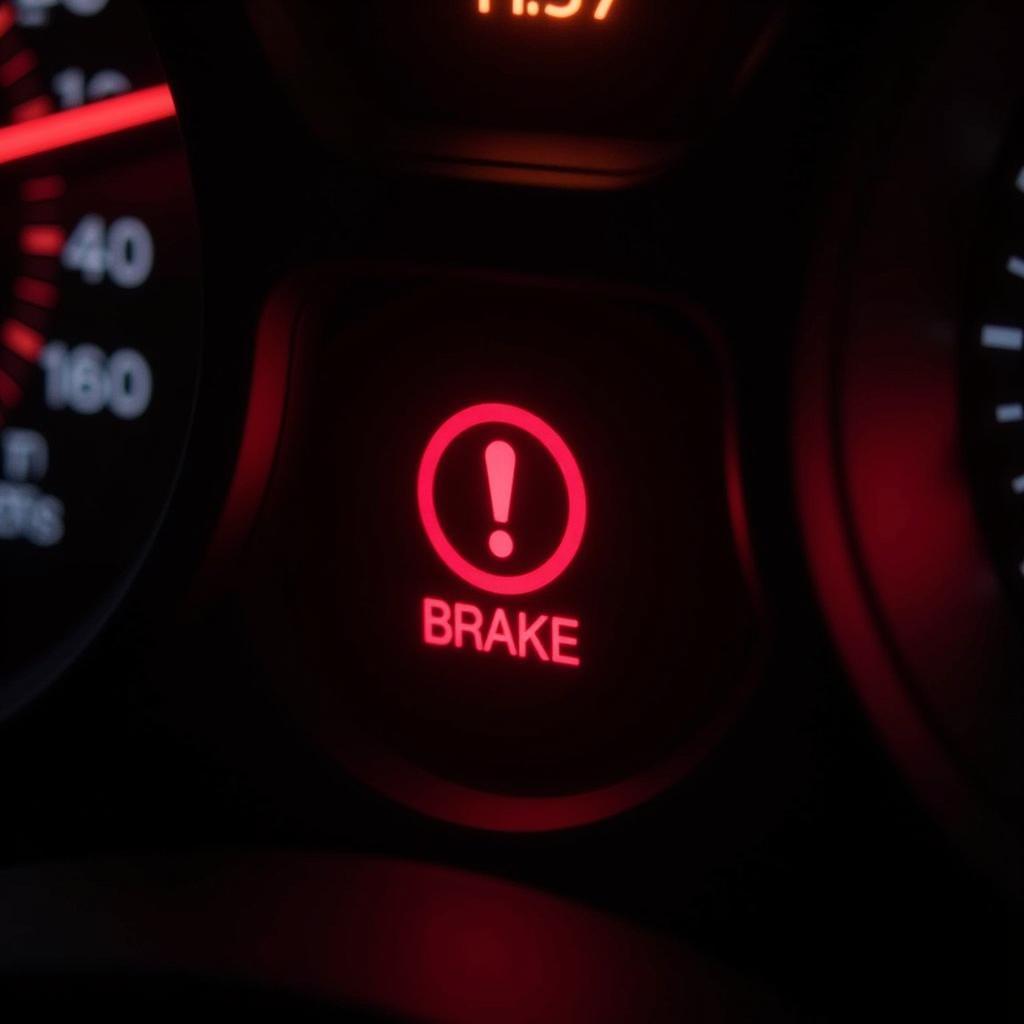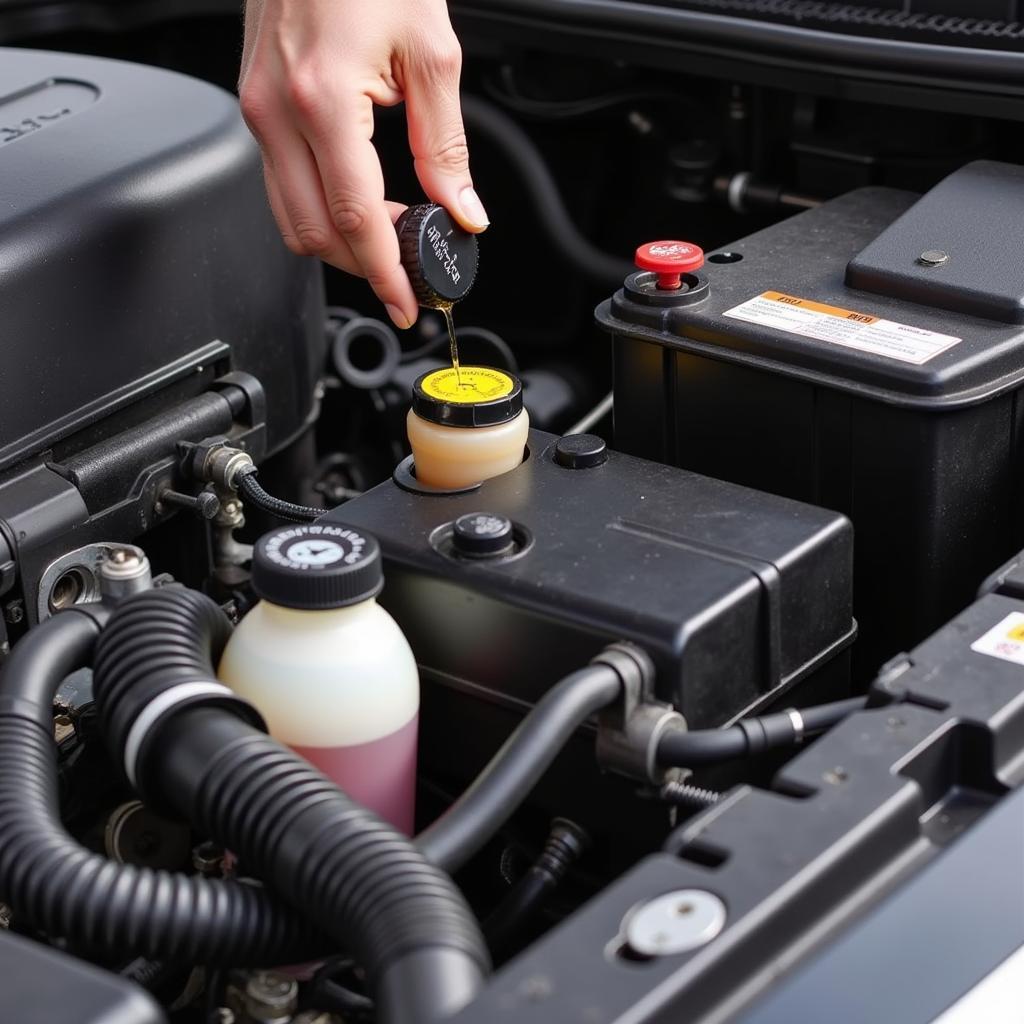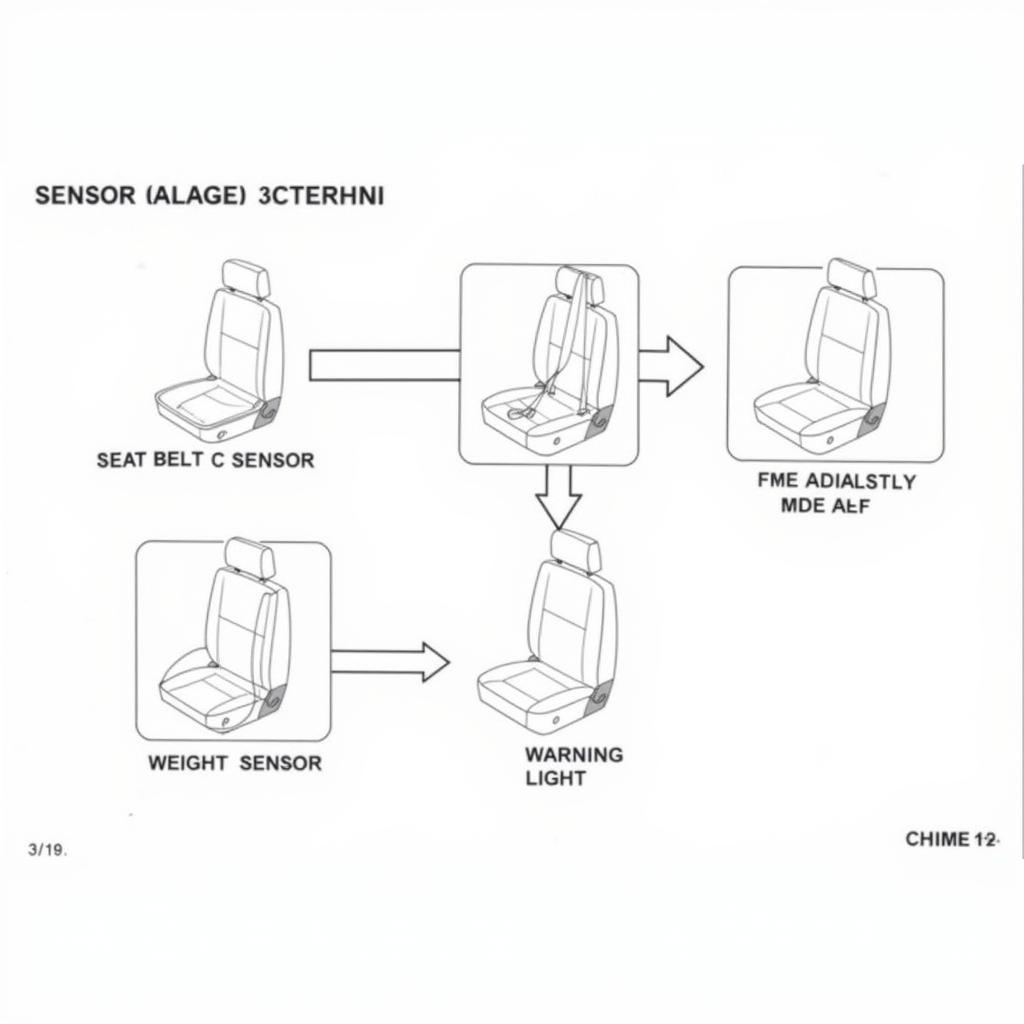The emergency brake hazard warning is a critical safety feature in modern vehicles, designed to alert the driver and surrounding traffic of potential danger. It signifies a problem with the braking system, urging immediate attention to prevent accidents. Understanding what triggers this warning, how to interpret it, and the appropriate steps to take can be crucial for maintaining both safety and vehicle health. Let’s delve into the intricacies of this vital warning system. After reading this article, you will gain a deeper understanding of the emergency brake hazard warning light and its significance. We’ll explore the common causes, diagnostic procedures, and solutions.
If you’re facing issues with your vehicle’s braking system, check out our guide on what could cause an emergency brake warning system to malfunction. You can also find more information on specific vehicle models, such as the Nissan Qashqai brake warning light.
The emergency brake hazard warning typically manifests as a bright red exclamation mark symbol (!), often accompanied by the word “BRAKE” or a similar indicator on the dashboard. This warning light can be triggered by various issues, ranging from a simple disengagement of the parking brake to more serious problems like low brake fluid or a malfunctioning ABS system. Ignoring this warning can lead to reduced braking efficiency, increased stopping distances, and potentially dangerous driving situations.
Understanding the Different Types of Brake Warnings
It’s important to differentiate between the emergency brake hazard warning and other brake-related warning lights. For example, the ABS (Anti-lock Braking System) warning light indicates a problem with the ABS system, while the brake pad wear indicator warns of worn-out brake pads. The parking brake warning light, on the other hand, simply indicates that the parking brake is engaged. While each light relates to the braking system, they address distinct issues and require different responses. Understanding these distinctions is crucial for proper diagnosis and action.
Why is the Emergency Brake Hazard Warning Important?
The emergency brake hazard warning light serves as your first line of defense against potential brake failures. It’s designed to catch your attention immediately and prompt you to take action, thus preventing accidents and ensuring road safety. This warning is especially important in critical situations, such as descending steep inclines or navigating heavy traffic.
 Emergency Brake Hazard Warning Light on Dashboard
Emergency Brake Hazard Warning Light on Dashboard
Common Causes of an Emergency Brake Hazard Warning
Several factors can trigger the emergency brake hazard warning. A common cause is simply forgetting to disengage the parking brake. However, more serious issues can also be at play, such as low brake fluid levels, worn brake pads, or a malfunctioning brake sensor. A leak in the brake line, a faulty ABS module, or even a damaged wire can also trigger the warning.
Diagnosing the Emergency Brake Hazard Warning
Diagnosing the exact cause of the emergency brake hazard warning requires a systematic approach. First, check if the parking brake is engaged. If it is, release it and see if the warning light disappears. If the warning persists, check the brake fluid level. Low brake fluid is a serious issue that needs immediate attention.
 Checking the Brake Fluid Level in a Car
Checking the Brake Fluid Level in a Car
If the brake fluid level is adequate, it’s advisable to have the braking system inspected by a qualified technician. They can use diagnostic tools to pinpoint the exact cause of the problem, whether it’s a faulty sensor, a worn component, or a more complex issue. Learn more about the automatic emergency brake warning light for further insights. For those driving a Ram ProMaster, understanding the emergency brake warning Promaster is crucial.
Solutions for Addressing the Emergency Brake Hazard Warning
The solution depends on the underlying cause of the warning. If the issue is low brake fluid, topping it off might resolve the problem. However, if there’s a leak, it needs to be repaired before adding more fluid. Worn brake pads require replacement, while a faulty sensor or ABS module needs to be addressed by a qualified technician.
Preventing Future Emergency Brake Hazard Warnings
Regular maintenance is key to preventing future emergency brake hazard warnings. This includes routine brake inspections, timely brake pad replacements, and regular checks of the brake fluid level. Following the manufacturer’s recommended maintenance schedule can help identify potential problems early on, preventing them from escalating into more serious and costly repairs. Understanding the emergency brake hazard warning can prevent further issues.
 Mechanic Inspecting Car Brakes
Mechanic Inspecting Car Brakes
Conclusion
The emergency brake hazard warning is a vital safety feature in your vehicle. Ignoring it can lead to serious consequences. Understanding its various causes and knowing how to respond appropriately can help ensure your safety and the longevity of your braking system. Don’t hesitate to seek professional assistance if the warning persists after basic checks. Regular maintenance is also crucial in preventing future occurrences of this warning and maintaining optimal braking performance.
FAQ
- What does the emergency brake hazard warning light look like? It’s typically a red exclamation mark symbol (!), often accompanied by the word “BRAKE.”
- What should I do if the warning light comes on? First, check if the parking brake is engaged. If it isn’t, check your brake fluid level. If the problem persists, consult a mechanic.
- Can low brake fluid cause the warning light to illuminate? Yes, low brake fluid is a common cause of this warning.
- Is it safe to drive with the emergency brake hazard warning light on? It’s not recommended. Reduced braking efficiency can make driving dangerous.
- How can I prevent the emergency brake hazard warning from appearing? Regular brake maintenance, including fluid checks and timely pad replacements, is crucial.
- What if the warning light comes on and off intermittently? This could indicate a faulty sensor or a loose connection. Consult a mechanic.
- What’s the difference between the emergency brake hazard warning and the ABS warning light? The emergency brake hazard warning signals a general brake system problem, while the ABS light specifically indicates an issue with the anti-lock braking system.

